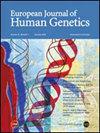Implications of monogenic bicuspid aortic valve (BAV) forms among sporadic BAV patients
IF 4.6
2区 生物学
Q2 BIOCHEMISTRY & MOLECULAR BIOLOGY
引用次数: 0
Abstract
Bicuspid aortic valve (BAV) represents the most common congenital heart defect and is genetically heterogeneous. While the majority of cases results from common risk variants that confer disease cumulatively, a small proportion of BAV cases has a monogenic etiology where penetrant rare variants (RVs) in single genes are disease causing. We assessed the proportion of monogenic BAV cases in 740 non-syndromic and non-familial BAV patients that should be representative for cardiovascular centers of maximum care. We used next generation sequencing- (NGS-) based single-molecule molecular inversion probes (smMIPs) and analyzed all monogenic BAV genes that have been identified so far (NOTCH1, SMAD6, ROBO4, GATA4, GATA6, and ADAMTS19). In these genes, we identified potential damaging RVs in 2% of our patients, which were not significantly enriched compared to 726 population-based controls. We conclude that the contribution of monogenic BAV forms is only small among non-syndromic and sporadic BAV patients.

散发性BAV患者单基因双尖瓣主动脉瓣(BAV)形态的意义。
双尖瓣主动脉瓣(BAV)是最常见的先天性心脏缺陷,具有遗传异质性。虽然大多数病例是由累积致病的常见风险变异引起的,但一小部分BAV病例具有单基因病因学,即单基因的渗透罕见变异(RVs)是致病的。我们评估了740例非综合征性和非家族性BAV患者中单基因BAV病例的比例,这些患者应该是心血管中心最高护理的代表。我们使用基于新一代测序(NGS-)的单分子分子倒置探针(smMIPs),分析了迄今已鉴定的所有单基因BAV基因(NOTCH1、SMAD6、ROBO4、GATA4、GATA6和ADAMTS19)。在这些基因中,我们在2%的患者中发现了潜在的破坏性RVs,与726个基于人群的对照组相比,这些RVs没有显著富集。我们得出结论,单基因BAV形式的贡献仅在非综合征和散发BAV患者中很小。
本文章由计算机程序翻译,如有差异,请以英文原文为准。
求助全文
约1分钟内获得全文
求助全文
来源期刊

European Journal of Human Genetics
生物-生化与分子生物学
CiteScore
9.90
自引率
5.80%
发文量
216
审稿时长
2 months
期刊介绍:
The European Journal of Human Genetics is the official journal of the European Society of Human Genetics, publishing high-quality, original research papers, short reports and reviews in the rapidly expanding field of human genetics and genomics. It covers molecular, clinical and cytogenetics, interfacing between advanced biomedical research and the clinician, and bridging the great diversity of facilities, resources and viewpoints in the genetics community.
Key areas include:
-Monogenic and multifactorial disorders
-Development and malformation
-Hereditary cancer
-Medical Genomics
-Gene mapping and functional studies
-Genotype-phenotype correlations
-Genetic variation and genome diversity
-Statistical and computational genetics
-Bioinformatics
-Advances in diagnostics
-Therapy and prevention
-Animal models
-Genetic services
-Community genetics
 求助内容:
求助内容: 应助结果提醒方式:
应助结果提醒方式:


